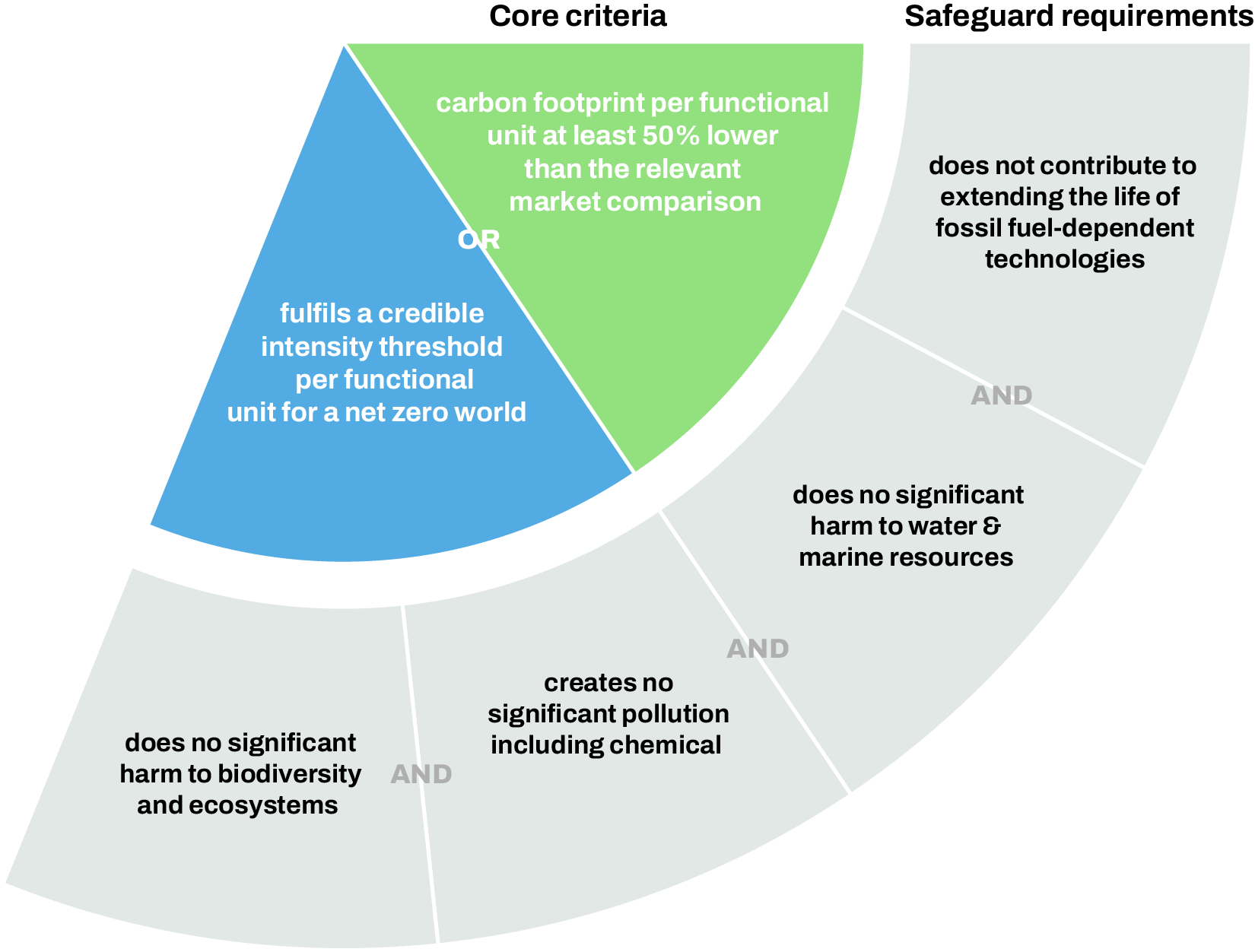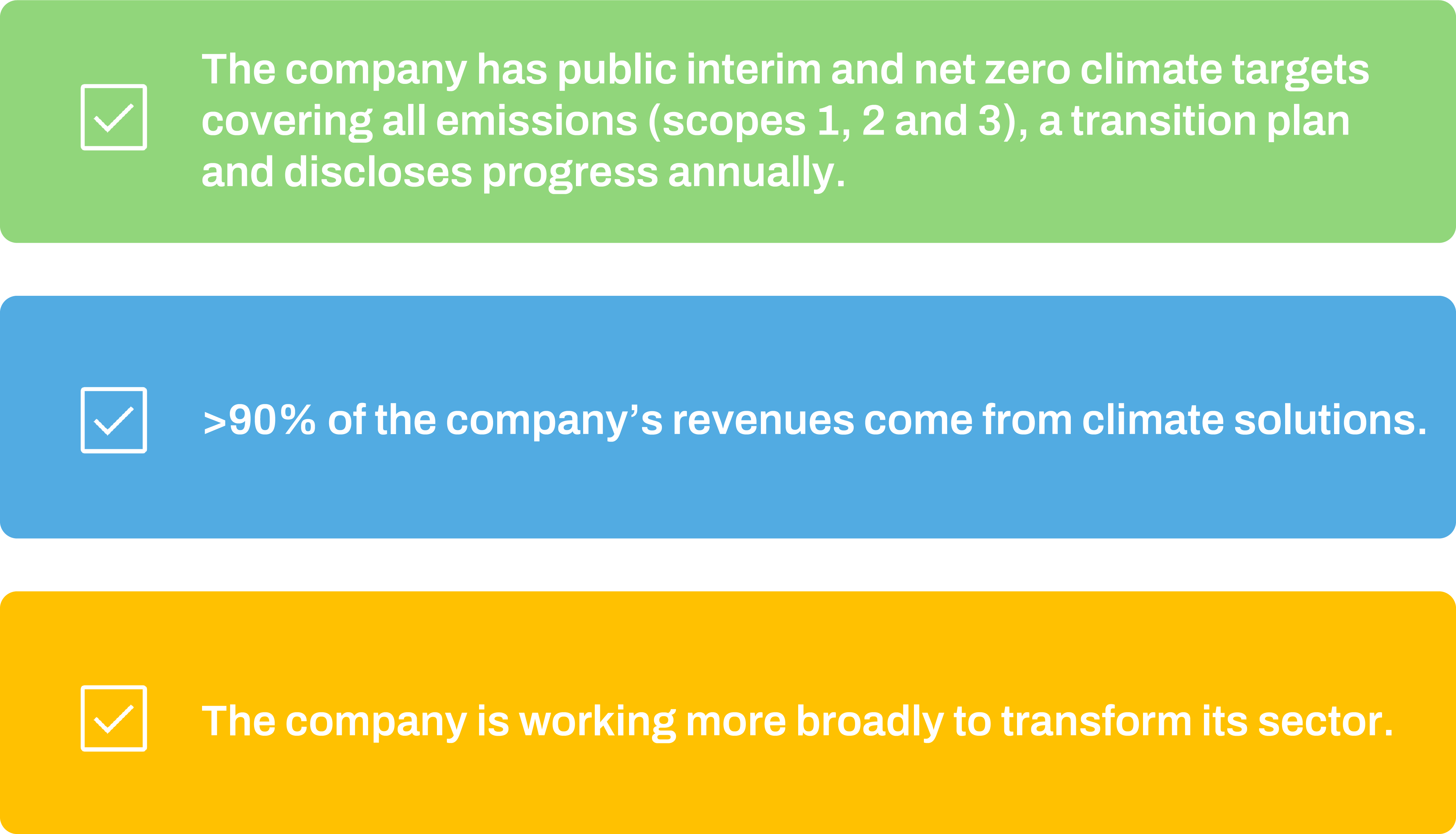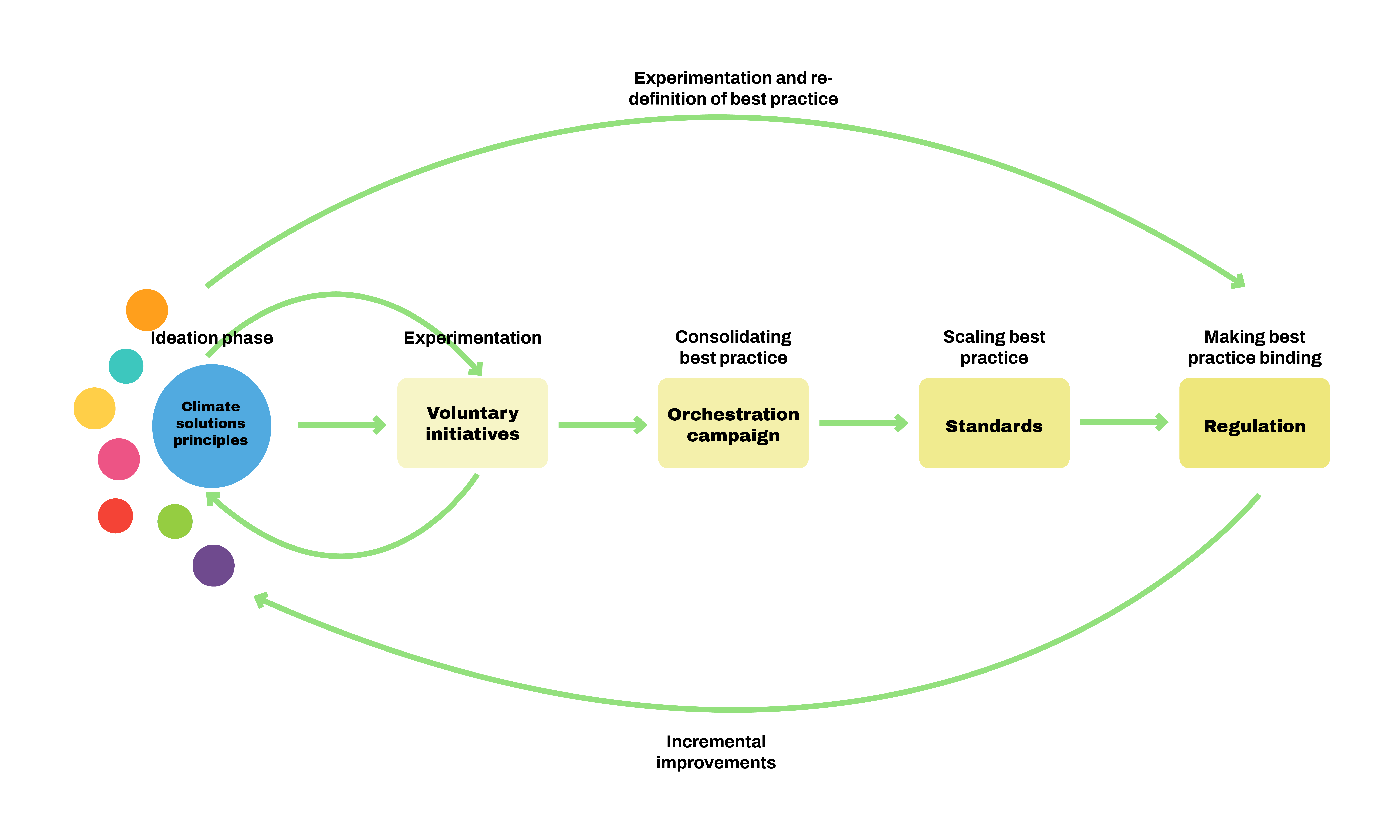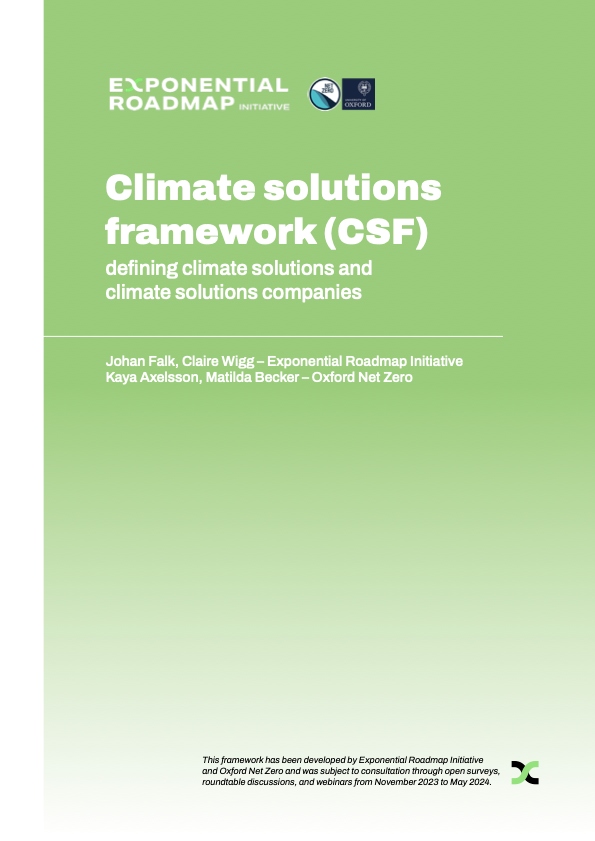About this framework
Climate solutions that replace high-emission activities with low- or zero-emission alternatives are essential for decarbonising our economies. These solutions need to be developed and scaled rapidly in order to phase out fossil fuels and other high-emission activities at the pace required. At global and sectoral levels, we know the kinds of technologies required and these technologies already exist.
But in order to shift money rapidly away from carbon intensive and fossil fuel–dependent products, financial institutions need clarity on which products and services can contribute to significant society-wide emissions reductions. And for corporates, the existing frameworks for company pledges, plans and progress reporting – such as greenhouse gas (GHG) inventory accounting, carbon-footprint quantification, 1.5°C-aligned target-setting by companies – are not sufficient for identifying and incentivising development of climate solutions at the product, service and entity levels.
This framework sets out criteria anchored in science for defining climate solutions and climate solutions companies. Our objective is to provide guidelines that are simple enough to be applied rapidly and at scale, with reasonable use of resources – and to do so with precision sufficient to accelerate the required climate transformation and avoid greenwashing.
Criteria for qualifying climate solutions
A climate solution is a product or service that meets a need in society, contributes to the reduction of GHG emissions and has significantly lower emissions than business-as-usual options. Production and consumption of climate solutions is compatible with the global 1.5°C ambition, and will accelerate the transition towards a net zero carbon economy.
This definition above is underpinned by proposed criteria for the qualification of products and services as climate solutions. To qualify as a climate solution, a product or service must fulfil one or more of three criteria, as well as underlying and safeguard requirements.

Criteria for qualifying a company as a climate solutions company
The criteria detailed in the paper are required for a company to qualify as a climate solutions company. Note they are for application to companies that supply climate solutions directly to markets.

Situating this work on the conveyor belt
Exponential Roadmap Initiative and Oxford Net Zero first published a discussion paper on climate solutions at COP28 in December 2023. This paper provided important new thinking with the aim that it would move along the so-called conveyor belt of the corporate climate accountability and governance system. Developed following a consultation through open surveys, targeted roundtable discussions and webinars, this framework for climate solutions takes a step further in aiming to feeding into experimental use by voluntary initiatives and efforts by orchestration campaigns, such as the Race to Zero, to consolidate best practice.

More resources
- Solutions House 2023 event: The Race to the Top: Scaling Climate Solutions Globally
- A climate solutions assessment framework for professional services providers
- Comment: The good news from the IPCC report
- Live cuts from our broadcasts on the We Don’t Have Time COP28 Climate Hub including Johan Falk, Kaya Axelsson of Oxford Net Zero, Otto Gernandt of H2 Green Steel and Massamba Thioye of the UNFCCC Secretariat 👇




